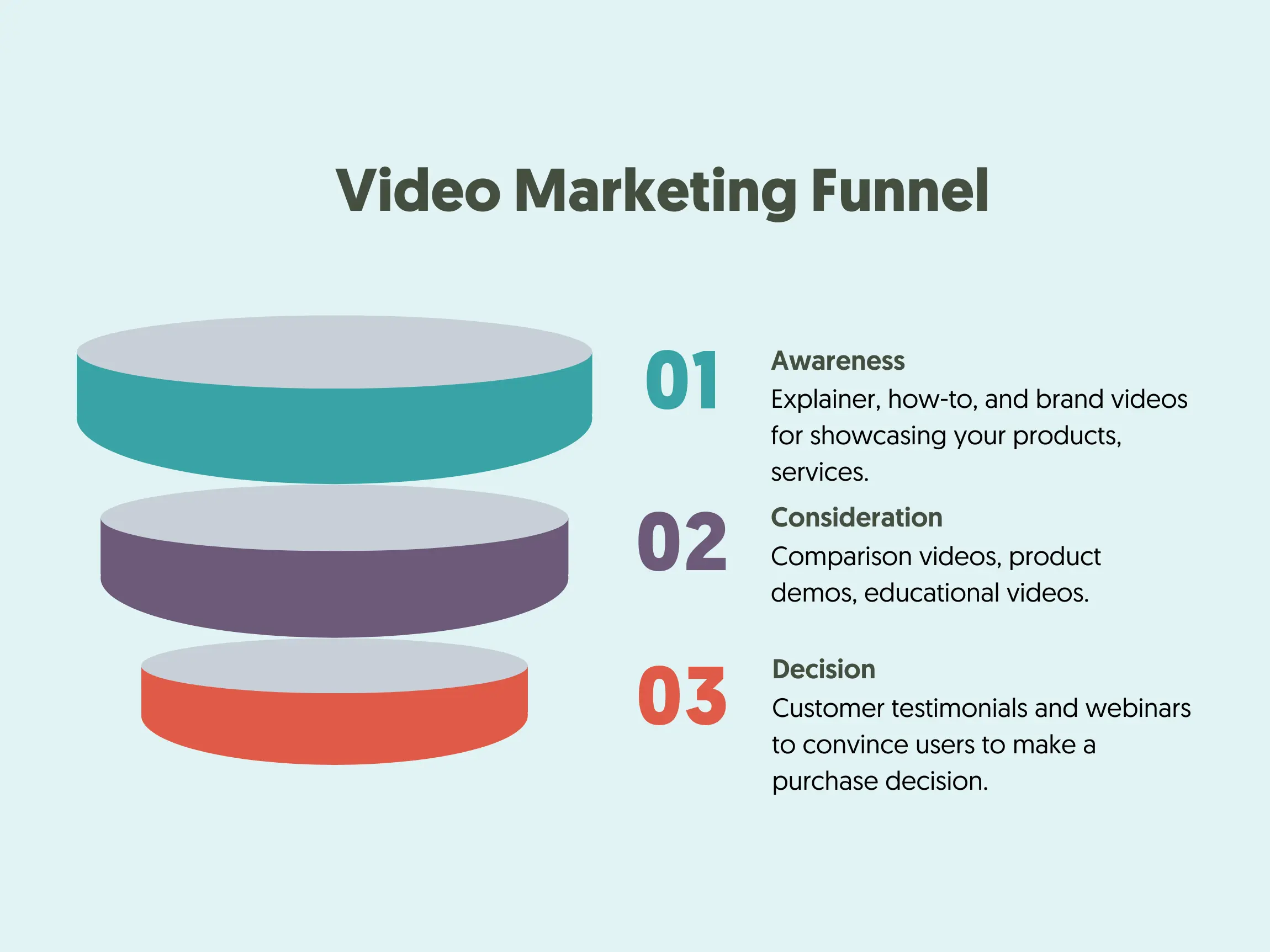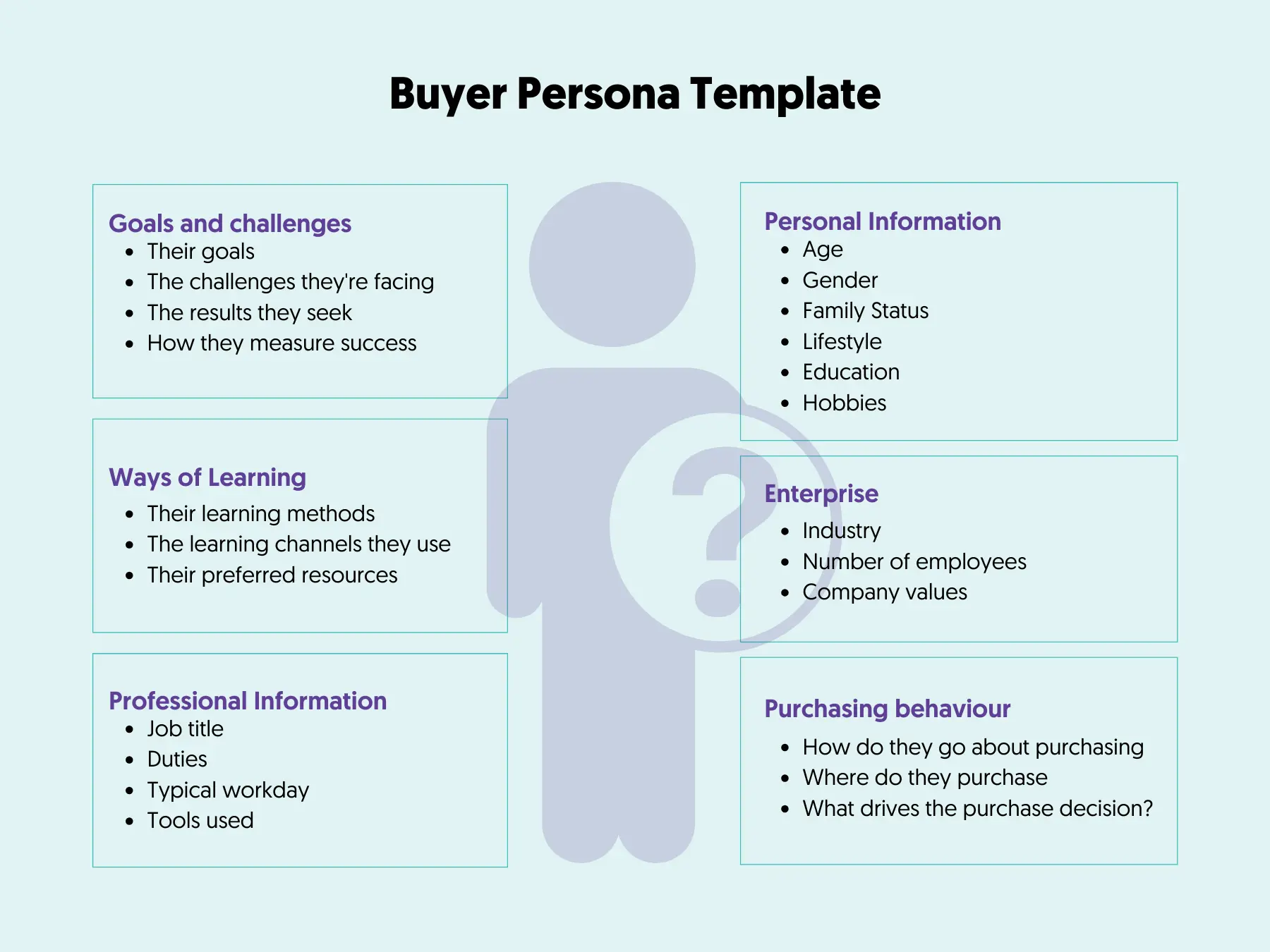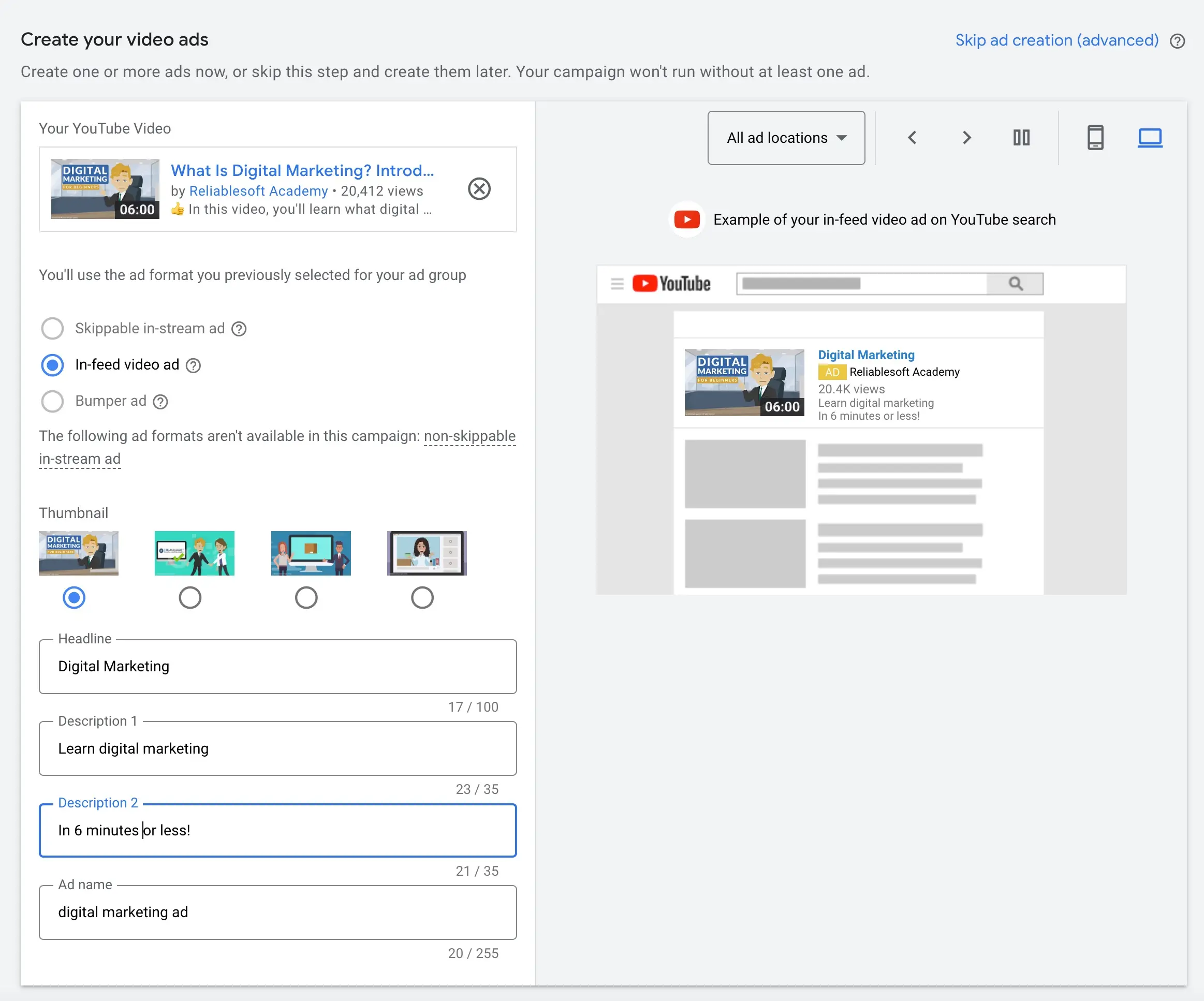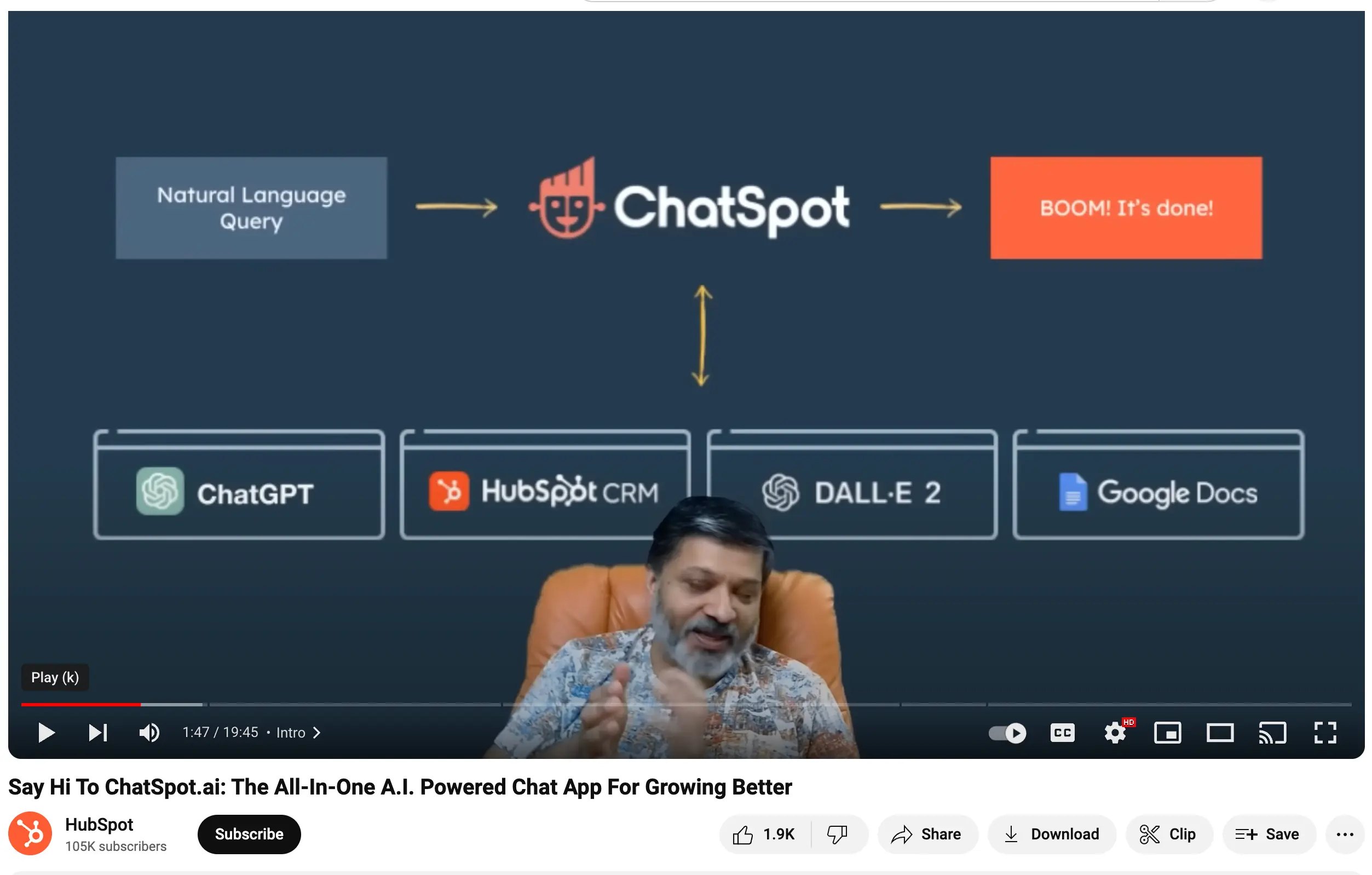What Is Video Marketing?
Video marketing involves using video content to engage, entertain, educate, and inform audiences about your brand and products. Brands use video marketing through various stages in the consumer journey, attracting new buyers, earning trust, and increasing conversions.
Types of Video Marketing
You can use many different types of content in your video marketing strategy. The most important are:
Brand videos: Used to increase brand awareness and showcase specific visions, missions, products, and services.
Explainer videos - are an excellent way to show how your product or service can benefit a customer.
Demo videos: Product demo videos showcase a product or service in more detail, highlighting specific features and capabilities.
Paid video ads: Paid video ads appear on platforms, such as YouTube, often playing before, during, or after a video to increase a company’s chances of conversions.
Testimonial videos: Testimonial videos are a form of social proof intended to increase a company’s credibility through brand advocates.
Webinars: Used for education, webinars are ideal for onboarding and retaining customers.
Live streams: Live streams are published in real-time and often feature interactive elements, such as Q&A sessions or polls.
Advantages of Video Marketing
Video marketing can generate several benefits for businesses that use this strategy. The most important are:
Reach a Wider Audience: Video content can appear to consumers on various channels, from product pages to social media platforms. Video is also twice as likely to be shared by consumers online than any other type of content.
Increase Engagement And Retention: Video is eye-catching, compelling, and informative. It can onboard new users, drive customer success, and increase retention.
Improve SEO: Video can improve your SEO in various ways. It can increase click-through rates from the search engine result pages and help you earn quality backlinks. Plus, it reduces bounce rates, as people spend more time on a page with video content.
Enhance Trust And Credibility: With the right videos, companies can educate their audience, show thought leadership, and generate trust.
Achieve Higher Conversion Rates: Video is an excellent way to increase conversion rates by providing customers with useful information about your product or service.
Boost Brand Equity: Video offers an exceptional way for companies to highlight their values, vision, and mission. This leads to stronger consumer connections, increasing brand equity, and improving loyalty.
How Video Marketing Works
- Define Your Marketing Goals
- Understand Your Audience
- Decide On The Type of Video
- Write The Video Script
- Create The Video
- Publish Your Video
- Optimize Your Video For SEO
- Promote Your Video
- Measure The Performance of Your Video Campaigns
1. Define Your Marketing Goals
Any effective marketing strategy starts with clear goals. Understanding what you want to accomplish will help you determine where your video should sit in the marketing funnel and what it should include.

Awareness: If your video content is intended to capture the audience's attention, you must create videos highlighting your specific solutions or brand. Explainer, how-to, and brand videos can be excellent for showcasing your products, services, and unique brand attributes.
Consideration: To convince customers to purchase your products, you must offer unique insights. Comparison videos, product demos, and similar educational pieces can be extremely effective during consideration.
Decision: During the decision stage, you want to show your customers that your products and solutions can effectively solve their problems (better than the competition). Customer testimonials and webinars are helpful here.
Establish how you’ll measure the success of your video content while defining your goals. For instance, if the aim is to improve brand awareness, tracking traffic to your website from videos, the number of people searching for brand terms, and mentions are appropriate KPIs.
2. Understand Your Audience
Once you know the underlying purpose of your video, the next stage is to determine your ideal audience. The key to understanding your target audience is developing a strong buyer persona with insights into your customer’s purchasing journey, pain points, and aspirations.

When outlining your buyer personas, think about the following:
- Demographics: What’s your ideal customer’s age range, location, and gender? Do you have different groups of consumers in mind with varying demographic characteristics? For instance, do you want to target customers in different locations?
- Psychographics: What are the personality traits of your customers? Are they innovators constantly searching out the next big thing or people searching for comfort? What are their interests and hobbies?
- Behaviors: How do your consumers behave? What channels do they use to search for content and information online? What kind of technology do they regularly use, and how do they make purchasing decisions?
Remember, you may have multiple different audience segments to consider. For instance, if you’re a B2B brand selling accounting software, you may want to create different videos and content for small businesses, large enterprises, and agencies.
3. Decide On The Type of Video
With your target audience and goals in mind, you can start exploring the best types of video to achieve your targets and connect with your customers.

For instance, if you’re attempting to build thought leadership and awareness of your brand with B2B brands, you might create webinars or share snippets from an event on your LinkedIn page.
You might consider short-form videos like Reels on Instagram to raise awareness with a younger audience. When choosing the right kind of video, think about:
- Your goals: Some video types are more effective at achieving certain things. A testimonial video is excellent for earning consumer trust during the decision stage, while brand videos are better for building awareness.
- Customer intent: What will the intent of your target audience be during the portion of their journey when they interact with your video? Are they looking to buy something or need information and guidance?
- Production options: What kind of videos can you effectively produce based on your existing resources? Do you have case studies and reviews you can turn into testimonials? Can you combine step-by-step instructions into a how-to video?
Ideally, you’ll want to produce numerous videos to address each stage of the customer journey and each type of intent.
4. Write The Video Script
The best video content is always carefully planned according to your marketing goals. Creating a script can seem time-consuming, but it’s the best way to ensure you cover the right messages in your content.
Outline exactly what you want to accomplish with your video before writing the script. For example, if you want to help consumers use your product or service with a how-to video, outline the key features they’ll want to use and determine how you’ll explain their functionality. When creating your script, remember to address all the elements of your video.
This includes your dialogue, voiceovers, music, animations, sound cues, visuals, and other details moving your story forward. It’s worth keeping length in mind, too. The average reading pace is about 2 words per second. This means a one-minute video should usually include around 120 words.
5. Create The Video
Once you have your script, you can begin putting the elements of your video together. Ensure you have the right technology and resources for this.
A high-quality camera capable of capturing HD video and sound is essential. You’ll also need video editing tools like Adobe Premier Pro or Corel VideoStudio. These solutions will help you edit your video, reduce dead air time, and improve image quality.
When creating your video, focus on:
- Audio/video quality: Use professional tools and resources to ensure perfect video and audio content. Check equipment before you start recording to minimize the risk of any technical faults.
- Lighting and styling: Ensure your environment is well-designed to highlight your brand. Make sure you have plenty of light on set, and avoid shadows. Think about the set props, decorations, and background.
- Extra assets: Do you need additional assets in your video, such as animations, slideshows, or voice-over components? You may need to work with professional graphic designers to create these assets in advance.
Remember to edit your video carefully before publishing it. Remove awkward pauses or content that doesn’t deliver value to your audience.
6. Publish Your Video
Now, it’s time to consider where you will publish your video. Distributing your content in the right channels is essential to your success. The most common platforms for video distribution include:
- Owned channels: These are the places you have full control over, such as your website, blog, YouTube channel, and social media accounts. Distributing your content across your owned channels will help you reach a wider audience. Remember, you can include video embeds and links in your email campaigns.
- Earned media channels: You can consider partnering with other companies to expand your reach further. For instance, you might share your videos with publications relevant to your industry or promote them through influencers.
- Paid channels: You can also publish your video through paid platforms. For example, you might use them in social media, sponsored content, search ads, and on channels like YouTube.
There’s no one-size-fits-all strategy for choosing the right promotional channels. Remember, if you’re publishing your content on multiple platforms, you may need to repurpose the content for certain environments. A long-form how-to video may work well on your blog or LinkedIn account, but it may struggle to succeed on channels like TikTok.
7. Optimize Your Video For SEO
SEO is one of the most important tools in the digital world. It ensures you can attract the right audience's attention and boost visibility. However, many companies still overlook the importance of video SEO.
Video can be a powerful resource for your search presence, with videos appearing in Google searches. To improve your ranking chances:
- Research relevant keywords: Choose keywords for your video descriptions, titles, and tags based on consumer intent. You can use tools like Ahrefs and SEMRush to examine the potential traffic volume of each term and the term’s associated intent.
- Optimize your content with keywords: Implement the keywords you’ve chosen in your video description, title, tags, and any other relevant assets you can use, such as hashtags on social media.
- Focus on engagement: Boost your chances of customers watching your videos by optimizing your content for engagement. Tell your users to like, share, and comment on the video across social channels.
8. Promote Your Video
Simply placing your videos on the right channels will help to boost visibility, but you still need to promote your content to give it as much reach as possible. There are various ways you can enhance the ROI of your video content.
One option is to cross-promote your video across different channels. If you create a video for YouTube, post links to it on your social media profiles, embed it in your email newsletters, and showcase it on your website.
Video ads can be another excellent way to boost visibility. You can pay to promote your content on channels like YouTube, Facebook, Instagram, TikTok, and even LinkedIn. Plus, audience targeting tools help to increase your chances of reaching the right audience.

Working with influencers is another excellent way to extend your reach. Influencers can share your videos (or snippets from them) on their channels. You can @mention them in your posts to attract their audience and even work with them on endorsements and sponsored content.
9. Measure The Performance of Your Video Campaigns
Like any form of content marketing, measuring the results of your videos is essential to ensuring you get the best ROI from your campaigns. The goals you set when beginning your video marketing strategy will help you determine which metrics and KPIs to measure.
For instance, if your goal is to attract more customers and raise brand awareness, you would monitor video views, impressions, unique traffic to your website, and mentions. If you’re trying to engage your audience, you can examine engagement metrics such as likes, comments, and shares on social media and view-through rates.
Most platforms come with tools to help you monitor the right metrics. You can use Google Analytics on your website to track how customers find your website and how long they spend on video pages.
Social media tools like Facebook and Instagram come with insights to help you examine the engagement rates for your videos. You can also track conversion rates using analysis tools to calculate the potential ROI of your content.
Video Marketing Best Practices
By now, you should have a good idea of what video marketing is and how it works. However, it’s worth noting that video does take time to master. Here are some quick tips to improve your chances of success:
Set a timeline and budget for your video: Create a clear timeline for every process step, and plan for the occasional delay. Ensure you dedicate enough talent and resources to creating and promoting your content.
Prioritize video quality: Excellent video and audio quality is essential to conveying the right message to your target audience. Customers won’t watch a poor-quality video, and your brand reputation might suffer.
Get to the point quickly: Although some consumers like watching longer videos, they quickly become bored when the content doesn’t get straight to the point. Keep your content clear and concise.
Include a CTA: Tell your customers what you want them to do after watching your video. You could ask them to check out your website, follow your social media channels, sign up for a webinar, or buy a product.
Use captions and subtitles: Captions and subtitles improve your video SEO by giving you more opportunities to rank for keywords. They’re also excellent for improving video accessibility, particularly for people who watch content without sound.
Optimize for mobile: Remember that many consumers now watch videos on their mobile devices. Ensure your video works well on various platforms and can be viewed vertically or horizontally.
Address all stages of the buyer funnel: Create content that guides your customers through their entire purchasing journey. Don’t just focus on raising awareness. Help consumers with the consideration and decision-making process. Commit to improving retention with videos that support existing customers, too.
Experiment with trends: Consider exploring new types of video content, from 360-degree and Augmented Reality videos to live video streams and fully animated videos.
Is Video Marketing Worth It?
Studies show videos generate more engagement and conversions than virtually any other content. Marketers who use video can increase revenue faster than their competitors while showcasing expertise and authority to consumers.
Additionally, video can be excellent for improving your online visibility. It can help you earn valuable backlinks and boost your chances of engaging with customers emotionally throughout the buyer journey.
However, there are some challenges to overcome. Producing excellent videos can be expensive. Not only do you have to pay for the right technology and software, but you need skilled professionals to work on content creation too.
Video production can be time-consuming and complex, particularly if you’re trying to stay up to date with ever-changing platform algorithms. Plus, as companies continue to embrace video as a marketing tool, there’s a lot of saturation on popular platforms.
This is particularly true now that marketers can use AI tools to produce animated videos and other content with minimal effort. If you want to stay ahead of the competition and earn results from your campaigns, you need a comprehensive plan.
Video Marketing Examples
While video marketing can be challenging, it can also drive incredible results. Countless leading organizations are using video to empower phenomenal growth. Here are a couple of success stories.
Adidas

When Adidas wanted to launch a new Nemeziz football shoe, it embraced the power of video to move consumers through the purchasing cycle. Rather than creating a one-size-fits-all campaign, Adidas created various sequential video paths for different viewers.
Viewers who engaged most with the company’s message (those who watched the bumper ad and the longer video on YouTube) were then automatically served an ad that offered a deeper insight into the product.
The result was a 33% increase in brand awareness and a 317% lift in product interest. The campaign worked because it focused on targeting the right audience with the most demand for the new product.
HubSpot

SaaS company HubSpot takes a comprehensive approach to content marketing, investing heavily in various types of video.
Some of the most successful videos from HubSpot are educational content. For example, the company’s video about “ChatSpot.Ai” teaches customers everything they need about HubSpot's latest conversational chat app. Within 7 months, the video had already earned almost a quarter of a million views on YouTube.



